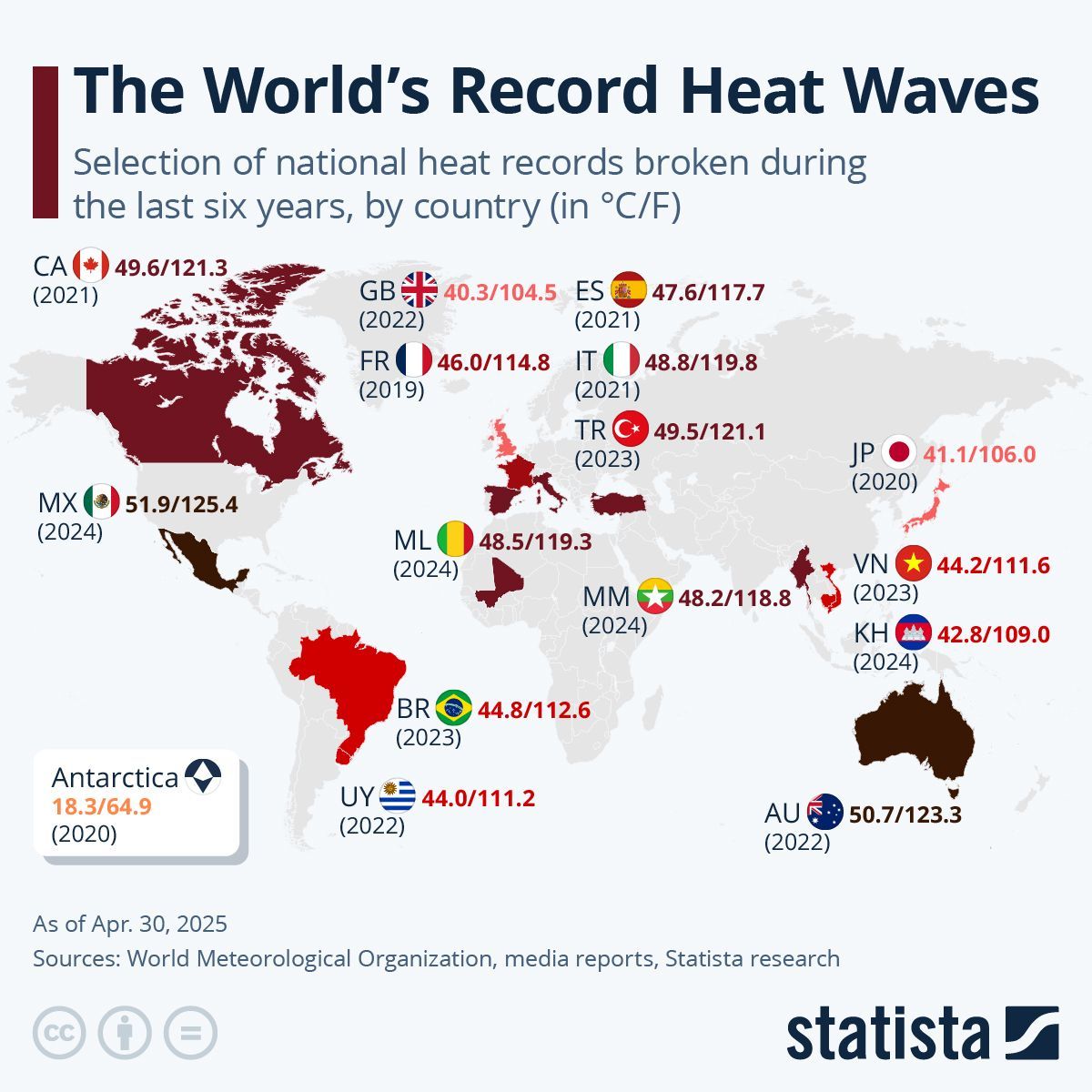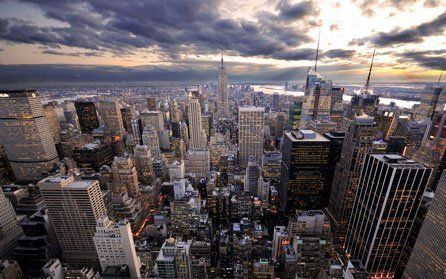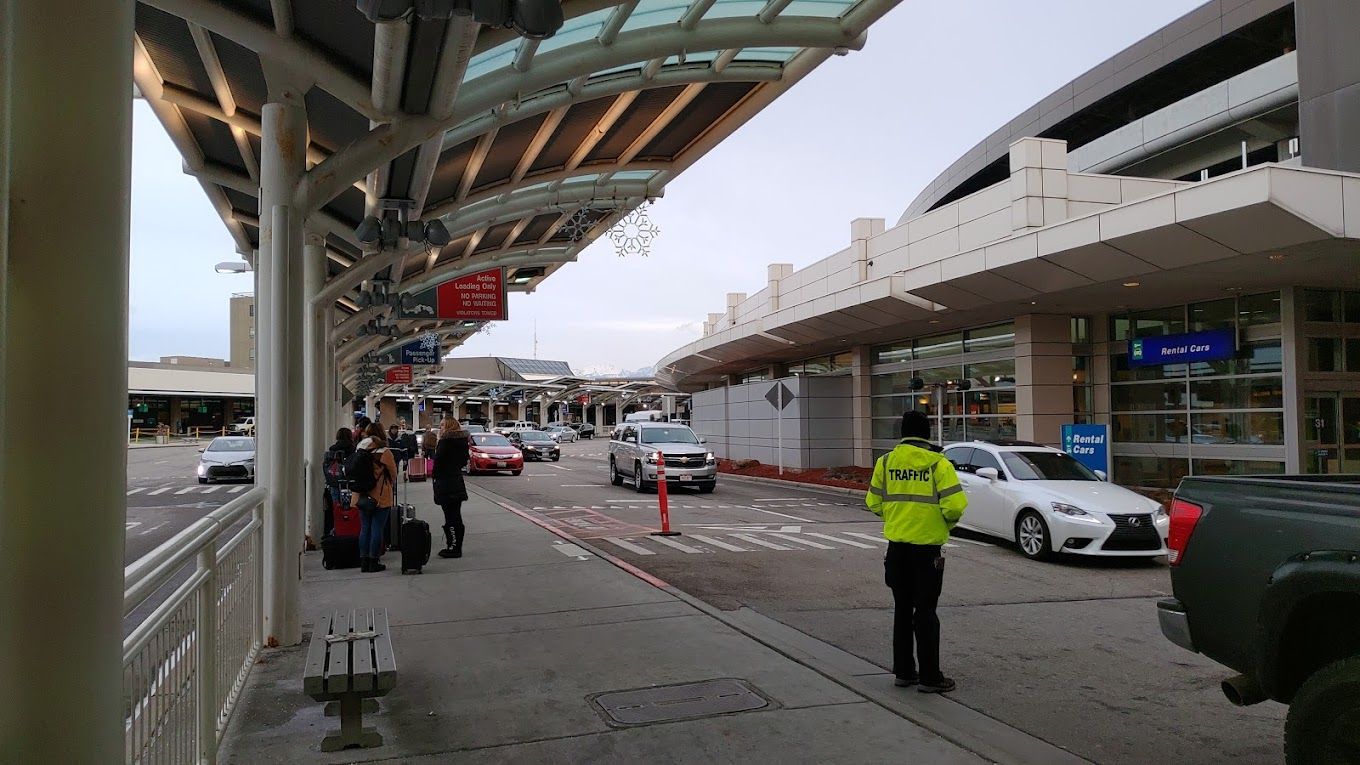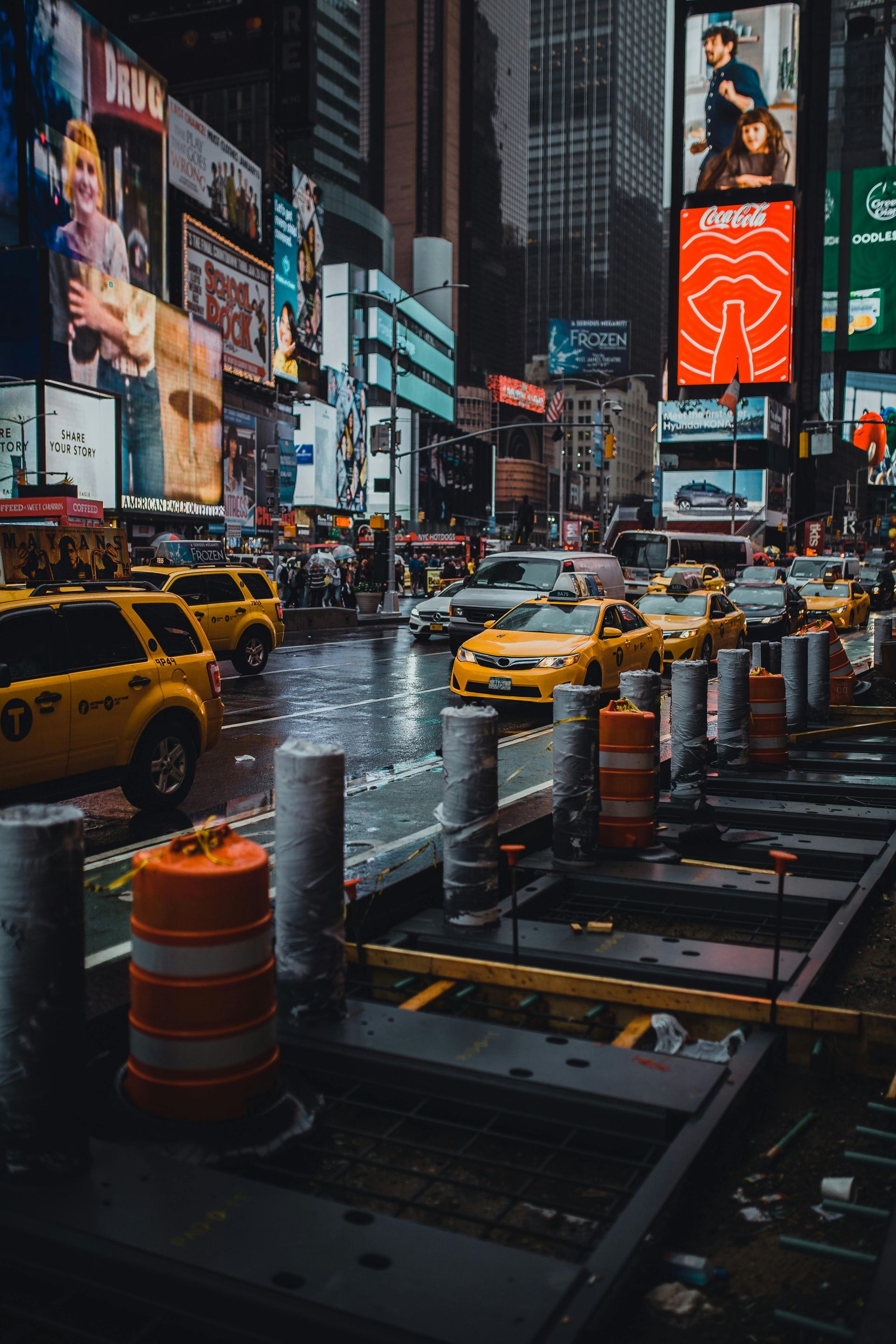The World's Record-Breaking Heat Waves
Is the world heating up?

Imagine stepping outside and being met with dangerously high temperatures that make the air feel heavy and unbearable. For millions of people worldwide, this feeling is no longer rare. Record-breaking heat waves are sweeping the globe, setting new temperature highs and reshaping daily life as we know it. But why is this happening, how is it affecting us, and most importantly, what can we do? Let's unpack the reality of record-setting heat waves and their profound implications.
Earth's Unprecedented Heat Records
Over the past decade, we’ve seen a dramatic escalation in the frequency and intensity of heat waves. Global and regional temperature records seem to be surpassed almost every year, pointing to an alarming trend of Earth’s warming.
Here are just a few of the extraordinary examples:
- India and Pakistan (April 2024): South Asia faced a blistering heat wave with temperatures reaching 50°C (122°F) in Shaheed Benazirabad, Pakistan, and 44°C (111.2°F) in Jaipur, India. Experts caution that these staggering temperatures are becoming the "new normal" for the region.
- Mediterranean Heatwave (2021-2022): Europe witnessed some of its hottest days on record. Italy hit 48.8°C (119.8°F) in Syracuse, the highest temperature verified on the continent, while the UK recorded a historic 40°C day in 2022.
- Antarctica (2020): Even the coldest place on Earth felt the heat when temperatures at the Esperanza base exceeded 18°C (64.4°F), setting a new record for the continent.
- Global Peak (2024): According to Copernicus data, July 22, 2024, became the hottest day globally, with an average temperature of 17.16°C (62.9°F).
- Death Valley, USA (1913): Though unmatched in recent years, the world record high of 56.7°C (134°F) recorded in Furnace Creek, California, still holds as Earth’s hottest day.
These figures are no longer anomalies but indicators of a worrying trend. The clear message from scientists is that the planet is heating up at an unprecedented pace.
Analyzing the Causes
Why are heat waves becoming so extreme? At the core of the issue lies human-driven climate change.
Key Contributing Factors:
- Greenhouse Gas Emissions: Burning fossil fuels like coal, oil, and gas has significantly increased carbon dioxide and methane levels in the atmosphere. These gases trap heat, leading to a phenomenon we know as global warming.
- Deforestation: Forests act as natural carbon sinks, absorbing carbon dioxide. Rampant deforestation reduces their ability to regulate the planet's temperature.
- Urbanization: Expanding cities create heat islands where concrete and asphalt absorb and retain heat, increasing urban temperatures.
- Natural Cycles: Earth's climate has natural fluctuations, but human activity has drastically amplified and accelerated these changes.
The Impact of Heat Waves
Extreme heat isn’t just uncomfortable; its effects ripple across ecosystems, economies, and human health, making it a global crisis.
On Ecosystems:
- Biodiversity Loss: Species unadapted to such extreme temperatures face increased mortality, threatening ecosystems.
- Wildfires: Prolonged heat coupled with drought conditions creates the perfect storm for devastating wildfires, as seen in recent events in Australia and California.
- Water Scarcity: Higher temperatures increase evaporation rates, drying up water bodies and reducing freshwater availability.
On Human Health:
- Heat-Related Illnesses: Heat stroke, exhaustion, and dehydration are becoming more common, particularly in vulnerable populations like the elderly and children.
- Economic Strain: Agriculture suffers as crops fail under extreme heat, leading to rising food prices and financial instability.
- Infrastructure Challenges: Power grids and transport systems falter under excessive heat, disrupting daily life.
Can We Turn the Tide?
Addressing record heat waves requires immediate action on multiple fronts. While the challenges are monumental, solutions exist to mitigate the impacts and prevent further warming.
Potential Solutions and Preventative Measures:
Transition to Renewable Energy: Reduce greenhouse gas emissions by shifting from fossil fuels to clean energy sources like solar, wind, and hydroelectric power.
- Green Infrastructure: Plant urban forests and implement green roofs to combat the heat island effect in cities.
- Adopt Sustainable Practices: Encourage industries and individuals to reduce waste, recycle, and consume responsibly.
- Improved Heat Readiness: To protect citizens, governments must implement heat action plans, including cooling centers and early warning systems.
- International Collaboration: Climate change knows no borders. Global policies like the Paris Agreement need vigorous enforcement and commitment from all nations.
Final Thoughts
Record-breaking heat waves are a stark reminder of climate change's immediate and far-reaching consequences. They disrupt our daily lives, harm biodiversity, and challenge global economies, but they also push us to rethink our relationship with the planet.
Addressing these challenges might feel daunting, but every action counts. Whether it’s reducing your carbon footprint, supporting renewable energy initiatives, or advocating for systemic change, we can all contribute to a more sustainable future.
If this topic resonates with you, take the first step toward making a difference. Explore expert insights and resources to learn more about how you can adapt to and counter climate change. Together, we can help write a new narrative for our warming planet.
Would you like to share your thoughts or personal experiences with rising temperatures? Leave a comment below to join the conversation. Let's spark meaningful dialogue about building a more resilient future.














